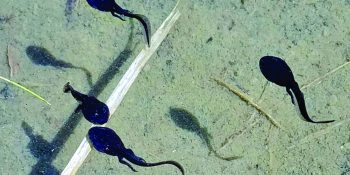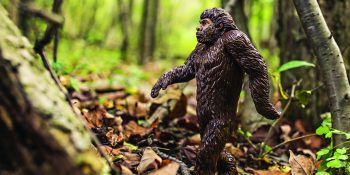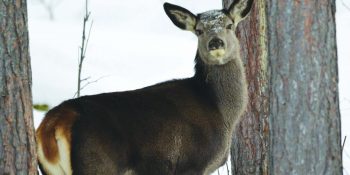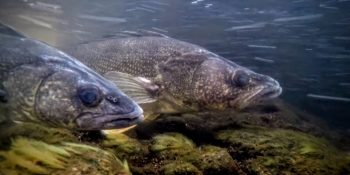NATHROP, Colo. — As temperatures climbed under a blistering sun, about 35 Colorado Parks and Wildlife aquatic biologists, staff and volunteers headed up a steep mountain trail last week, each loaded with large bags of water filled with 200 or so squirming, black Boreal toad tadpoles.
In all, the hikers hauled 4,600 tadpoles up to an alpine wetland on Brown’s Creek at 9,780 feet, beneath the snow-tipped reaches of Mount White.
The grueling six-mile roundtrip by the team was part of an effort by CPW, led by Paul Foutz, CPW native aquatic species biologist and Boreal toad specialist, to restore the state-endangered toad, whose numbers have been crashing due to a deadly skin fungus.
At the picturesque wetland, the hikers were greeted by University of Colorado PhD candidate Tim Korpita, who had set up a laboratory on the edge of the water. Korpita and several graduate students took possession of the bags of tadpoles and separated the black, squirming amphibians based on how far developed each was toward metamorphosis into full-grown toadlets.
After placing the tadpoles in tubs in the water, the team of scientists began preparing an experimental probiotic bath they’ve dubbed “Purple Rain” due to its purplish hue. They use bacteria native to the local biological community and naturally found on toads to increase the abundance of protective bacteria during a vulnerable life stage of the toads. Scientists hope the fungus-fighting bacteria will be absorbed into the amphibian skin and protect the toads.
After hours of swabbing and mixing, the Purple Rain solution was suctioned from dozens of Petri dishes, collected in a large bottle and then carefully poured into the tubs full of tadpoles.
Then the scientists waited. The tadpoles needed to be bathed in the solution for 24 hours before they could be released into the wetlands, an historic Boreal toad breeding site that is now absent of toads.
“This is a potential game-changer for Boreal toads and amphibians worldwide,” Foutz said as he prepared to release a tub of tadpoles, which had sleek, black heads, long, translucent tails and tiny little legs. “It’s critical we find a cure to this deadly skin fungus that is killing our amphibians.”
The release of tadpoles went on for several days and marks the first large-scale field application of Korpita’s CPW-funded research in the McKenzie Lab at the University of Colorado-Boulder.
Korpita and Dr. Valerie McKenzie and their research team have spent three years investigating the use of bacterial treatments to armor Boreal toads against the skin fungus. In their lab, Korpita and McKenzie increased toad survival by 40 percent after bathing the toads in the probiotic treatment.
The CPW staff and CU researchers will continue to monitor the tadpole’s development and metamorphosis this season. Next July they hope to find yearling toads returning to the wetland, where they will resurvey toads and check for the continued presence of the Purple Rain solution.
SPREAD THE NEWS
COMMENT, Like, Follow & SHARE @I70Scout
CURRENT EDITION
WEATHER & TRAFFIC PUZZLES RECENT NEWS ADVERTISE WITH US








